Brussels, Belgium (November 2003)
Deep in the heart of Brussels, not far from the Grand’ Place, sits a small throwback to a simpler time. In ages past, people maintained a more intimate connection with the food and beverages they consumed. The Cantillon Brewery preserves this aesthetic. It serves a working museum (map) open for guided and self-guided tours.
Additionally, maybe twice a year the brewers hold an open house. Here the public can observe the brewing process taking place in its most natural form, devoid of the industrial sterility of modern breweries. We happened to travel through Brussels on one of those rare days. Cantillon brews lambic style beers in the most traditionally manner. They use organic grains and open, natural fermentation sparked by ambient yeast.
Types of Grains
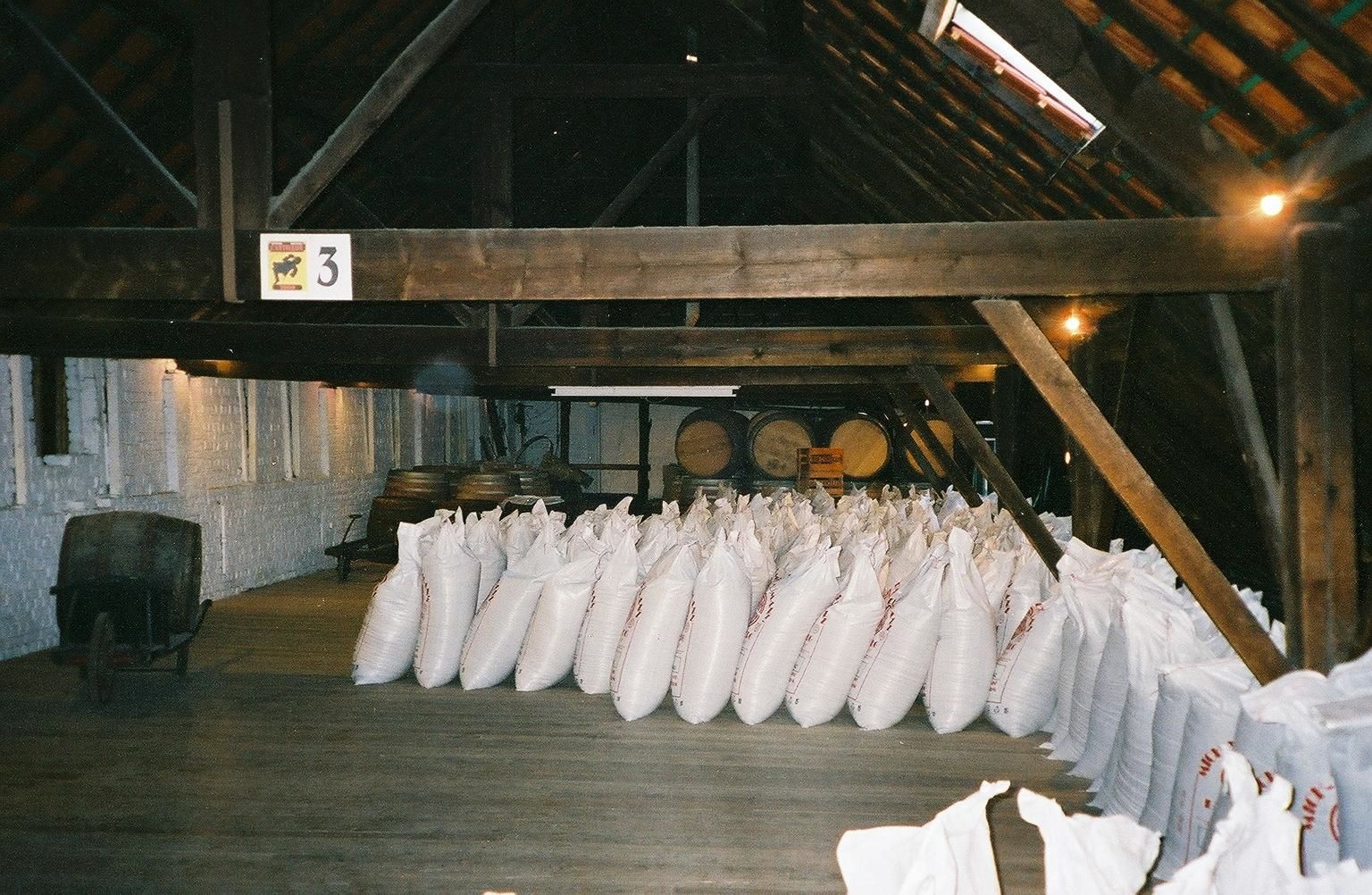
Bags of grain line the attic floor of Cantillon and serve as a basic ingredient of their beers. Barley (65%) and wheat (35%) underpin Cantillon’s beers, the traditional grains of lambics. They use no shortcuts or adjuncts designed to save money in this process.
Organic
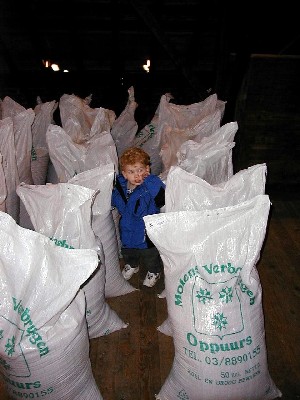
My quick web search on the Flemish writing found on these bags points towards a Belgian company that specializes in organic products. Certainly this befits a beverage made in such a traditional manner. Here, our little guy enjoyed climbing among the bags as we took our tour through the facility.
Notice the two bright spots in the background. Those holes serve an important purpose. The roof does not need to be repaired. Small openings throughout the building allow air to pass through the walls naturally. This allows wild strains of yeast to enter. It will become important later in the brewing process.
Hops
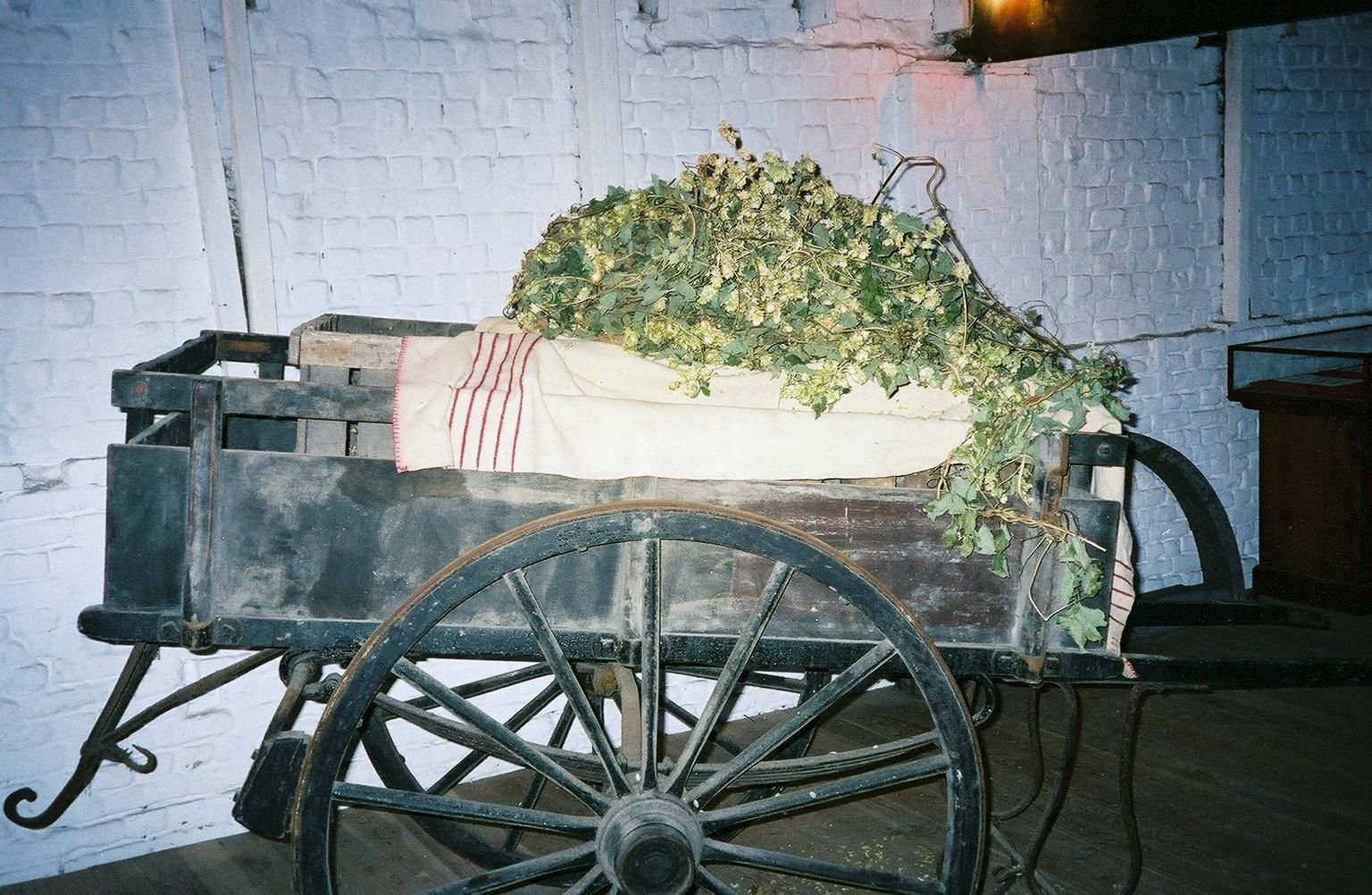
Hops forms the next basic ingredient. Cantillon dries their hops for three years. The photograph above provides an example of particularly dehydrated hops. While this nicely arranged wagon and its precious cargo obviously served as a display, it gets the basic point across.
Hops serves as a bittering agent and flavoring enhancement somewhat analogous to a spice. So why would Cantillon use hops aged to the point of desiccation and essentially devoid of flavor? Hops imparts another significant and historic attribute — as a natural preservative. It fulfills that primary purpose here too. Cantillon values the preservative quality of hops rather than the flavor. Their beers age for a long time before maturing. On top of that, consumers can cellar them for another twenty years if they like.
Boiling
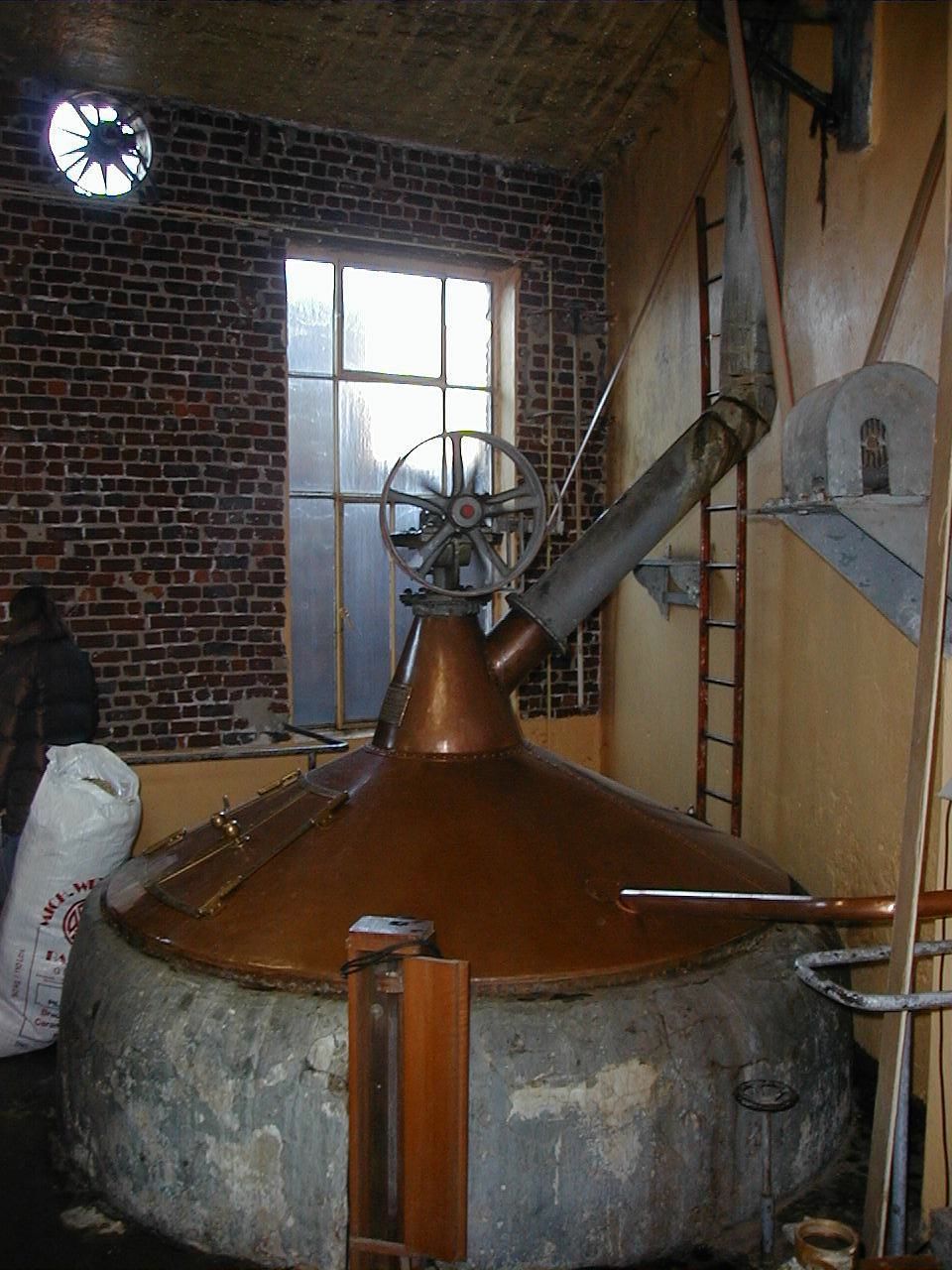
Malted grain and water combine in the brew kettle. Dried hops come later during the boil. The entire building fills with a wonderful aroma . Anyone who has ever been a homebrewer or who has spent time near a brewery would recognize the enticing smell.
Cooling and Initial Fermentation
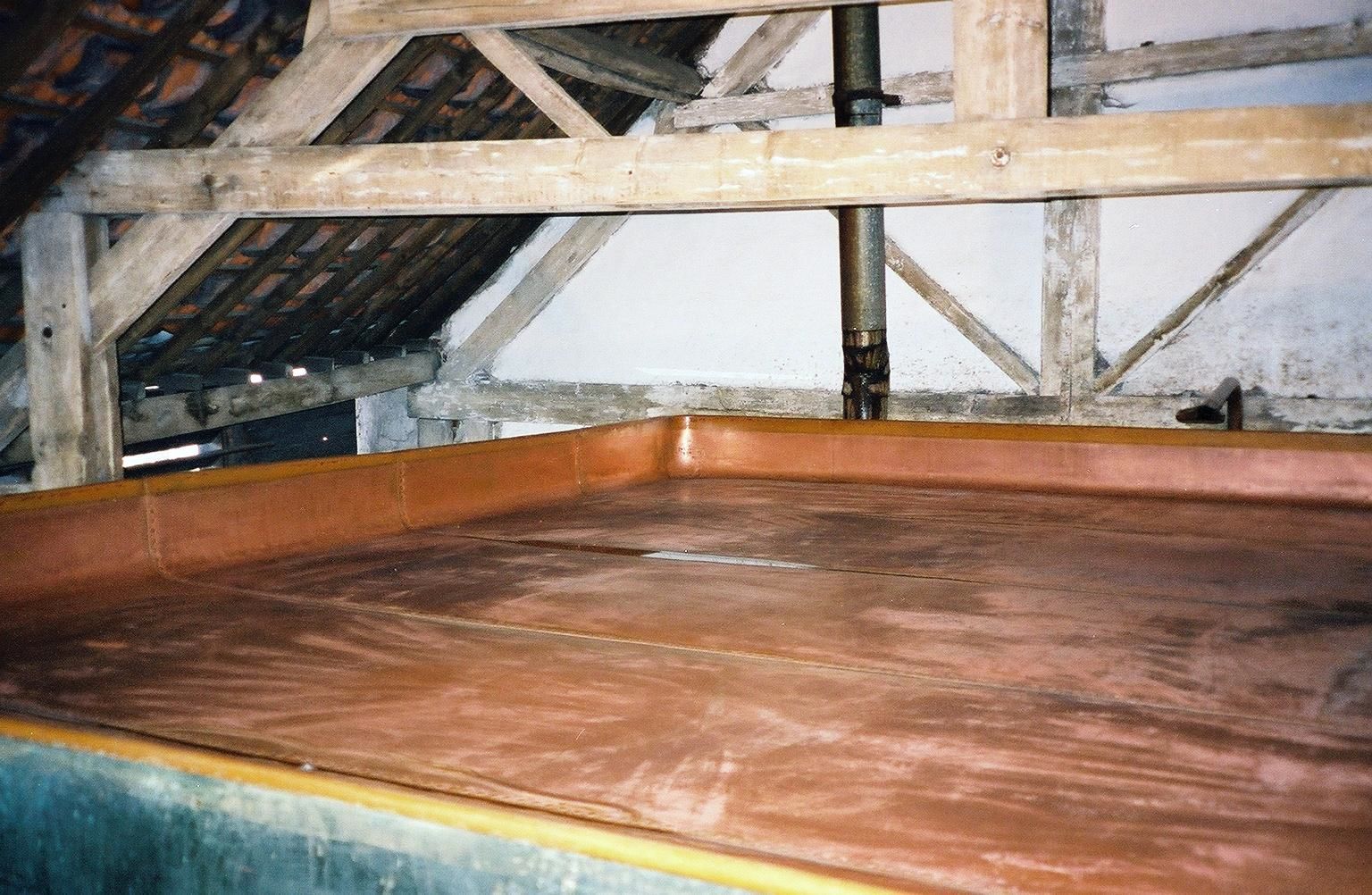
The resulting wort then goes to a cooling tun. Here that takes the form of an open, shallow copper pan called a coolship (or koelschip). This allows a tremendous amount of the hot liquid’s surface to be exposed to chilly air. Next, two things happen. First, the liquid, called wort, cools down quickly. Second, natural yeasts that happen to be floating around the building at that time inoculate wort.
In a modern brewery this would be a disaster. Great pains would be taken to chill the beer using a heat exchanger and introduce a specifically-cultivated yeast in a controlled environment. However, historically, brewing didn’t happen that way. Cantillon follows an ancient practice found in few other places today. The special yeast that ferments lambics occur naturally in only one small area near Brussels.
Aging
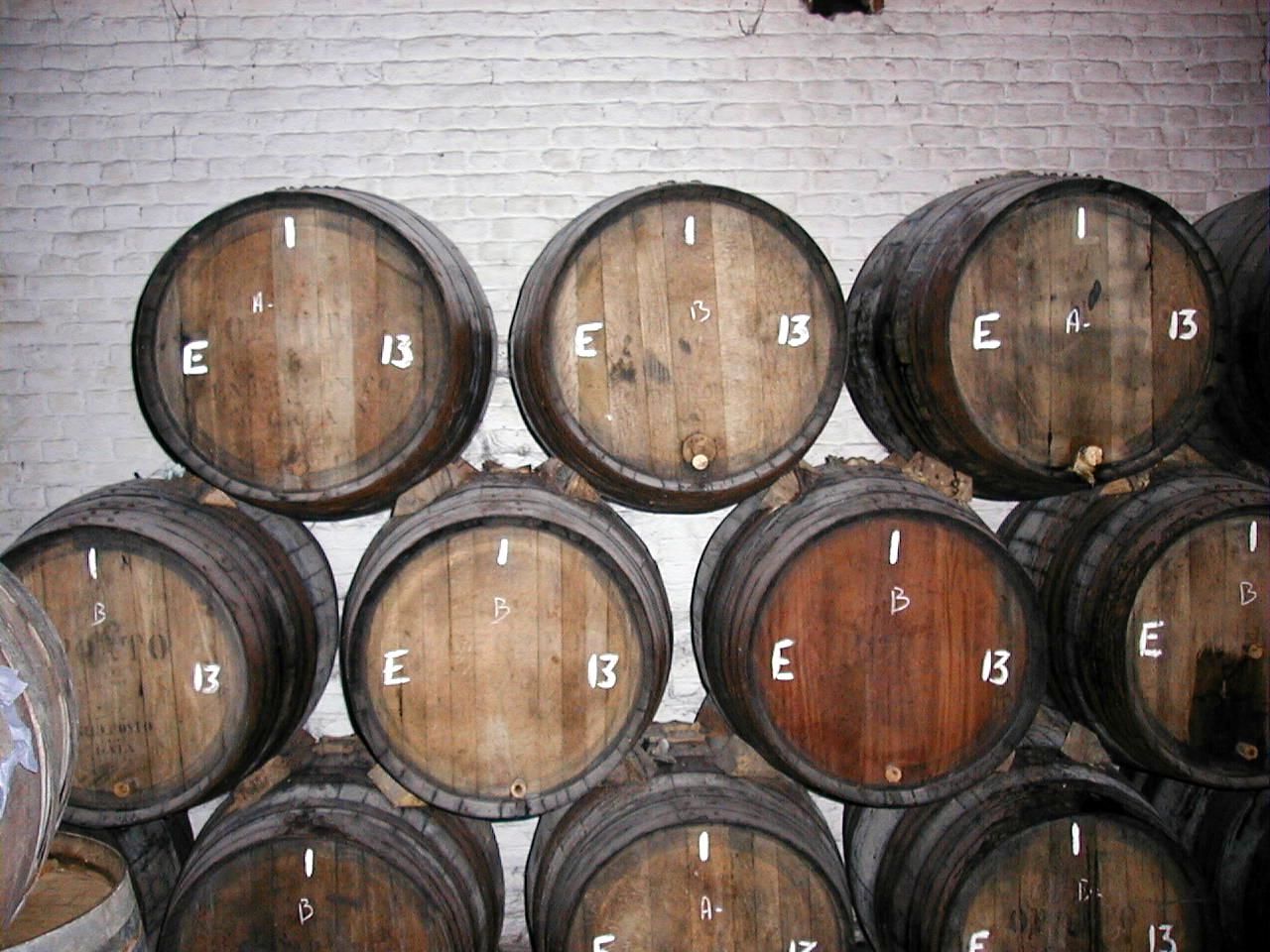
The cooled wort, newly inoculated with ambient yeast, moves into oak or chestnut barrels for fermentation. They will age for one to three years. A brewmaster makes sure to mark each barrel to denote vintage. He also carefully notes physical characteristics and attributes of each batch over time through regular tasting and testing.
Batches of different ages get blended together to create Gueuze. People who have tried lambics only from the larger breweries will be surprised by the pronounced sourness of a traditional Gueuze. Many aficionados consider it something of an acquired taste. The brewmaster commonly adds fruits to lambics to produce Kriek (cherry), Framboise (raspberry), or druivenlambik (grape lambic). Other fruits can also be added. This takes the edge off the sourness.

Leave a Reply